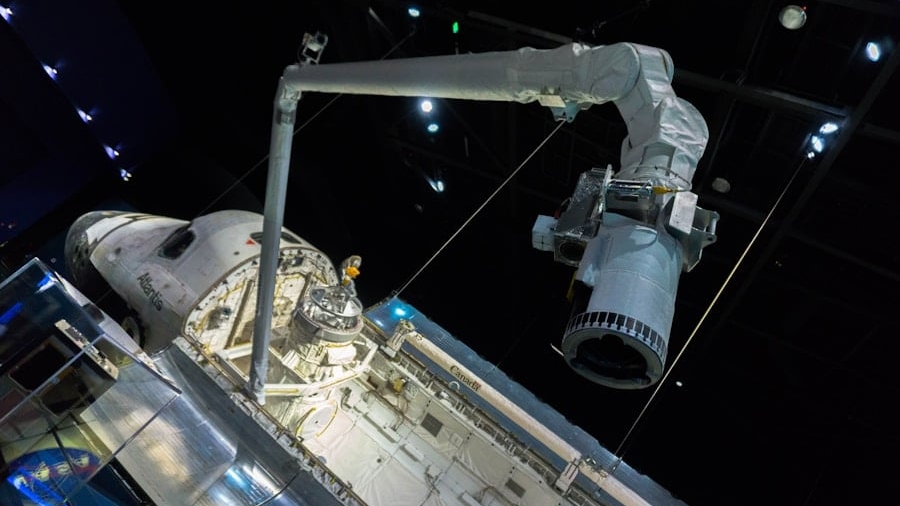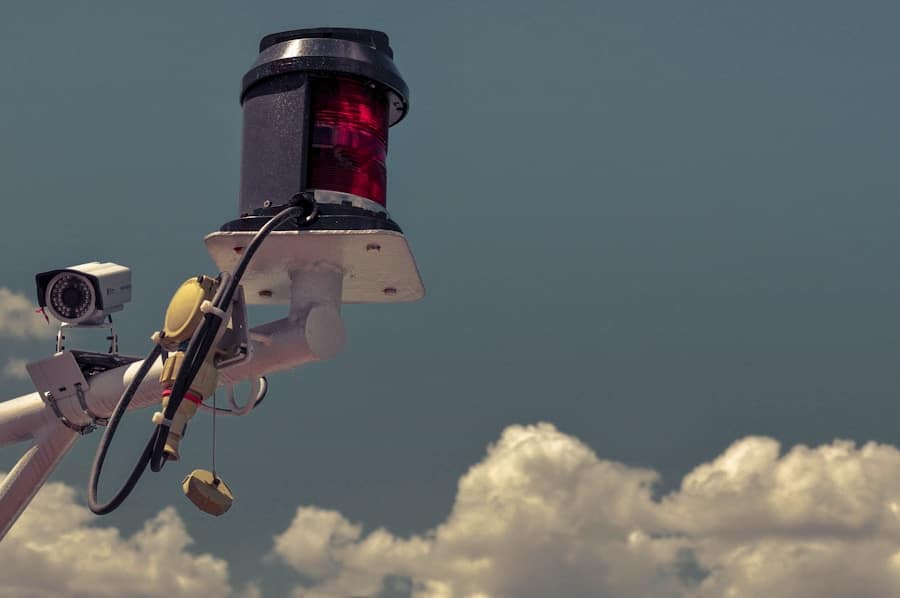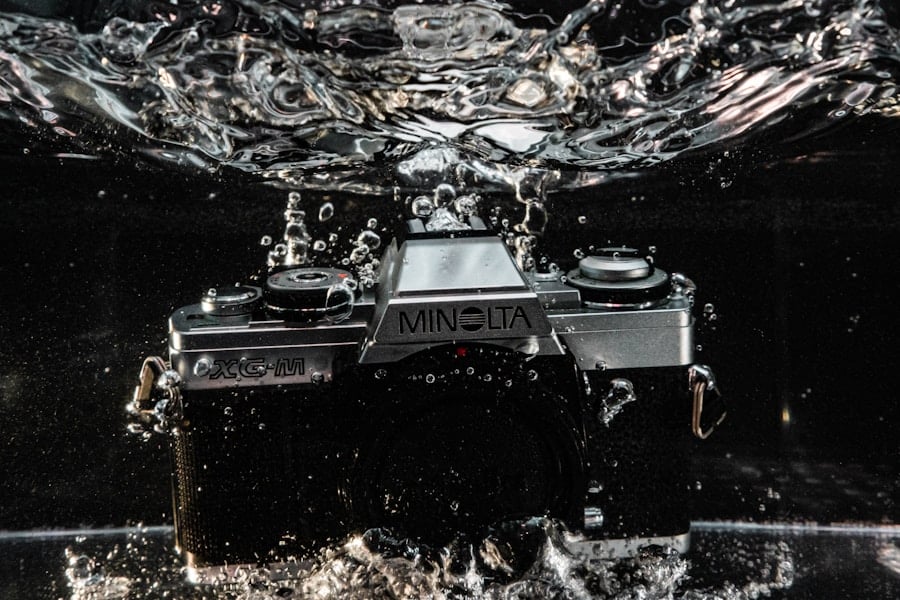Autonomous docking represents a significant leap forward in spacecraft technology, enabling vehicles to connect with one another without human intervention. This capability is particularly crucial for missions involving multiple spacecraft, such as those in low Earth orbit or deep space exploration. The process involves a series of complex maneuvers that require precise navigation, real-time decision-making, and the ability to adapt to dynamic conditions in space.
As the demand for more sophisticated space missions grows, the need for reliable autonomous docking systems becomes increasingly apparent. The concept of autonomous docking is not merely a technical challenge; it embodies the intersection of advanced robotics, artificial intelligence (AI), and aerospace engineering. By leveraging AI, spacecraft can process vast amounts of data from sensors and cameras, allowing them to make informed decisions during the docking process.
This technology not only enhances the efficiency of missions but also reduces the risk associated with human error. As we delve deeper into the evolution of AI in spacecraft technology, it becomes clear that autonomous docking is poised to revolutionize how we approach space exploration.
Key Takeaways
- Autonomous docking refers to the ability of spacecraft to independently approach and connect with another object in space, such as a space station or satellite.
- AI has played a significant role in the evolution of spacecraft technology, enabling autonomous docking and improving overall efficiency and safety.
- Challenges of autonomous docking include the need for precise navigation, real-time decision making, and the potential for collisions or damage during the docking process.
- AI has the potential to significantly improve docking accuracy by utilizing advanced algorithms, sensor technology, and machine learning to make precise adjustments during the docking process.
- The integration of AI in spacecraft technology has the potential to enhance safety and reliability by reducing human error and improving overall mission success rates.
The Evolution of AI in Spacecraft Technology
The integration of artificial intelligence into spacecraft technology has evolved significantly since the early days of space exploration. Initially, spacecraft relied heavily on pre-programmed instructions and manual control from ground stations. However, as missions became more complex and the need for real-time adaptability grew, researchers began to explore the potential of AI.
Early implementations included basic algorithms for navigation and control, but these systems were limited in their ability to respond to unforeseen circumstances. As computational power increased and machine learning techniques advanced, AI began to play a more prominent role in spacecraft operations. For instance, NASA’s Mars rovers, such as Spirit and Opportunity, utilized AI algorithms to navigate the Martian terrain autonomously.
These systems allowed the rovers to make decisions about their paths based on environmental data, significantly enhancing their operational efficiency. The success of these missions laid the groundwork for more sophisticated applications of AI, including autonomous docking systems that can handle the complexities of rendezvous and berthing in space.
The Challenges of Autonomous Docking
Despite the advancements in technology, autonomous docking presents a myriad of challenges that must be addressed to ensure successful operations. One of the primary obstacles is the need for precise navigation and positioning. Spacecraft must be able to determine their relative positions with extreme accuracy, often within centimeters, to ensure a safe and successful docking maneuver.
This requires advanced sensor technologies, such as LIDAR and high-resolution cameras, which can provide real-time data about the spacecraft’s surroundings. Another significant challenge is the dynamic nature of space environments. Factors such as microgravity, orbital debris, and varying lighting conditions can complicate the docking process.
For example, a spacecraft may encounter unexpected obstacles or changes in its trajectory due to gravitational influences from nearby celestial bodies. To overcome these challenges, autonomous docking systems must be equipped with robust algorithms capable of processing sensor data rapidly and making real-time adjustments to their trajectories. This level of adaptability is essential for ensuring that spacecraft can dock safely and efficiently under varying conditions.
The Role of AI in Improving Docking Accuracy
Artificial intelligence plays a pivotal role in enhancing the accuracy of autonomous docking systems. By employing machine learning algorithms, these systems can analyze vast datasets from previous missions to identify patterns and optimize docking procedures.
This predictive capability allows spacecraft to adjust their approaches dynamically, improving overall docking success rates. Moreover, AI can facilitate advanced sensor fusion techniques that combine data from multiple sources to create a comprehensive understanding of the spacecraft’s environment. By integrating information from cameras, LIDAR, and other sensors, AI algorithms can generate a detailed 3D model of the docking scenario.
This model enables more accurate calculations of relative positions and velocities, allowing for smoother and more precise docking maneuvers.
AI’s Impact on Safety and Reliability
The implementation of AI in autonomous docking systems significantly enhances safety and reliability during space missions. One of the primary benefits is the reduction of human error, which has historically been a leading cause of accidents in space operations. By automating the docking process, AI minimizes the reliance on human operators who may be subject to fatigue or stress during critical mission phases.
This shift towards automation allows for more consistent performance and reduces the likelihood of mistakes that could jeopardize missions. Furthermore, AI systems can continuously monitor their own performance and make adjustments as needed to ensure safe operations. For example, if a spacecraft detects an anomaly during its approach—such as an unexpected change in velocity or an obstacle in its path—the AI can quickly analyze the situation and implement corrective actions.
This level of responsiveness is crucial for maintaining safety in an environment where conditions can change rapidly. By enhancing both safety and reliability, AI-driven autonomous docking systems pave the way for more ambitious space exploration endeavors.
The Future of Autonomous Docking with AI
Looking ahead, the future of autonomous docking with AI appears promising as advancements in technology continue to unfold. One area of focus is the development of more sophisticated machine learning algorithms that can learn from each docking attempt, refining their strategies over time. This continuous learning process could lead to unprecedented levels of accuracy and efficiency in autonomous docking operations.
Additionally, as international collaboration in space exploration increases, there will be a growing need for standardized autonomous docking protocols that can be applied across different spacecraft and agencies. AI can play a crucial role in facilitating this standardization by enabling interoperability between various systems. For instance, if multiple countries are working on missions involving crewed spacecraft or space stations, AI-driven docking systems could ensure seamless connections between different vehicles regardless of their design or operational parameters.
Ethical Considerations and AI in Space Exploration
As with any technological advancement, the integration of AI into autonomous docking raises important ethical considerations that must be addressed. One significant concern is the potential for decision-making autonomy in critical situations where human lives are at stake. While AI can enhance safety by reducing human error, there is an inherent risk in allowing machines to make decisions without human oversight.
Establishing clear guidelines for when human intervention is necessary will be crucial as we move forward with increasingly autonomous systems. Moreover, there are broader ethical implications related to the use of AI in space exploration itself. As we venture further into space and establish a presence on other celestial bodies, questions arise about our responsibilities toward these environments.
The deployment of autonomous systems raises concerns about potential contamination or disruption of extraterrestrial ecosystems. Ensuring that AI-driven technologies are designed with ethical considerations in mind will be essential for fostering responsible exploration practices.
The Potential of AI in Redefining Spacecraft Docking
The potential of artificial intelligence in redefining spacecraft docking is immense and multifaceted. As we continue to push the boundaries of what is possible in space exploration, autonomous docking systems powered by AI will play a critical role in enabling more complex missions and enhancing operational efficiency. By addressing challenges related to navigation accuracy, safety, and reliability through advanced algorithms and machine learning techniques, we are laying the groundwork for a new era in space travel.
As we look toward the future, it is essential to remain mindful of the ethical considerations surrounding these technologies. Balancing innovation with responsibility will be key as we navigate the uncharted territories of space exploration. Ultimately, the integration of AI into autonomous docking not only promises to transform how we approach spacecraft operations but also holds the potential to redefine our relationship with space itself as we embark on this exciting journey into the cosmos.




